#Pindus National Park
Explore tagged Tumblr posts
Photo

Their place, their rules... Pindus National Park, Greece by denis_du on Instagram.
#greece#landscape#naturecore#animals#horses#snowscape#mountains#snow#national park#pindus national park#epirus#ioannina#mainland
107 notes
·
View notes
Text

Ο Εθνικός Δρυμός της Πίνδου η αλλιώς Βάλια Κάλντα είναι ένα μέρος που μοιάζει με παράδεισο. Ειδικά, το φθινόπωρο, η πανδαισία χρωμάτων δημιουργεί ένα τοπίο που μοιάζει με πίνακα ζωγραφικής...
#Βάλια Κάλντα#Εθνικός Δρυμός Πίνδου#φθινόπωρο#νομός Γρεβενών#νομός Ιωαννίνων#δάση#οροσειρά της Πίνδου#χρώματα του φθινοπώρου#φύση#Ελλάδα#Greece#Pindus National Park#Valia Calda#National Park#autumn#fall#European black pine#common beech#West Macedonia#Epirus#nature#Europe
4 notes
·
View notes
Text

The view of mount Tymfi from the other side of the valley. North Pindus national park, Greece - Author: Zealousideal_Lock_93
85 notes
·
View notes
Text

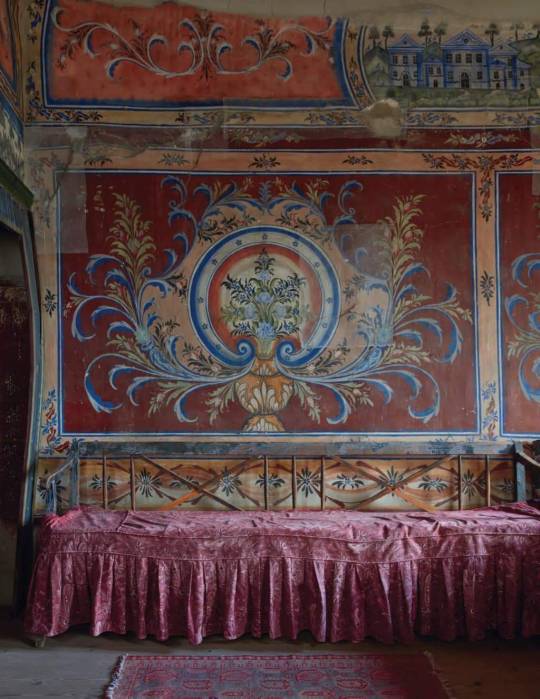
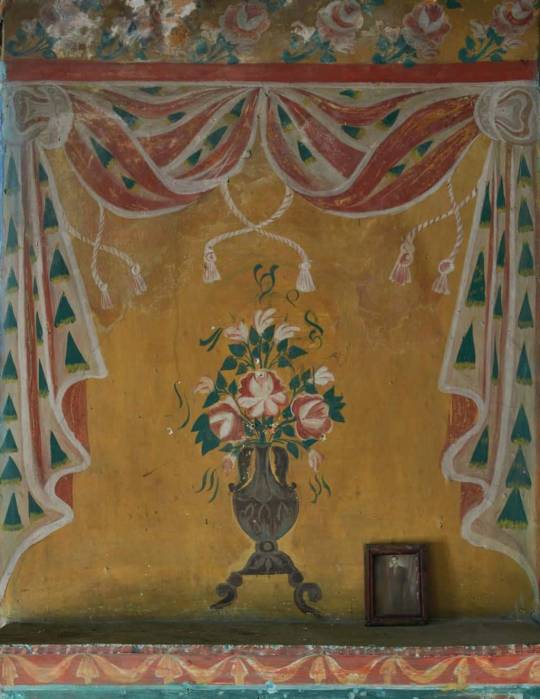
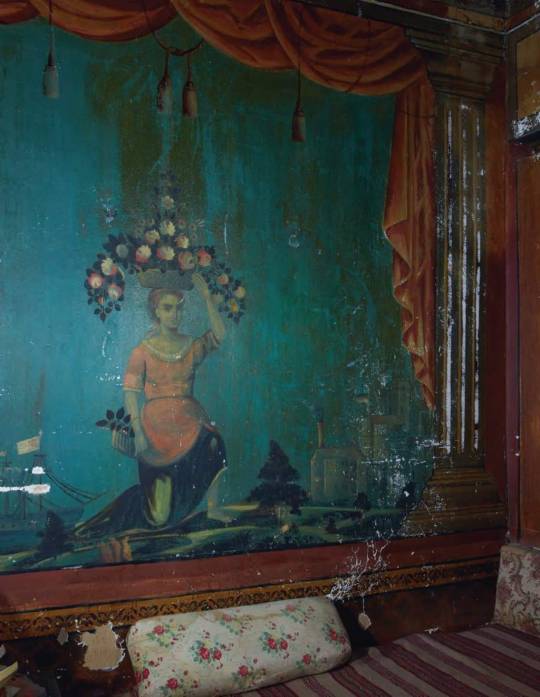

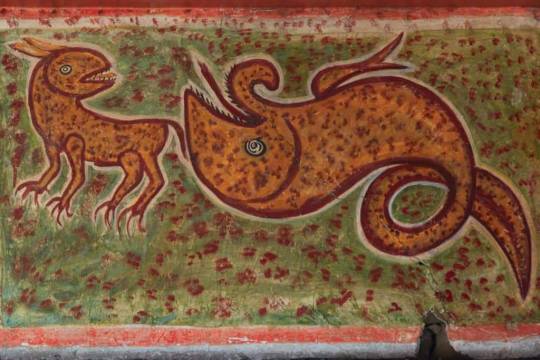
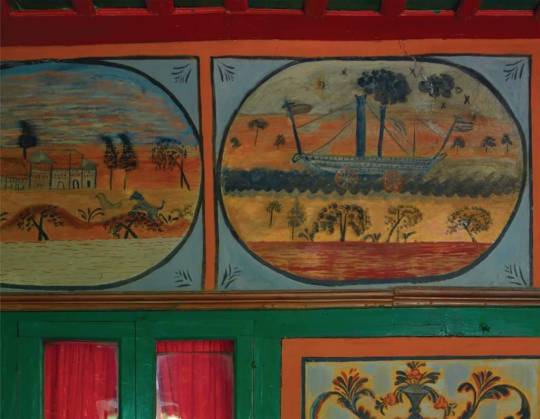
Kapesovo is one of the 46 villages of Zagori, a mountainous region of Greece that abuts the Albanian border, part of the North Pindus national park. The villages, nestled in deep green forest, cling to mountainsides or gorges, while their houses, all uniformly of grey limestone, cluster around the plane tree marking the village square. Inside, those houses are a riot of color. From World of Interiors.
61 notes
·
View notes
Text
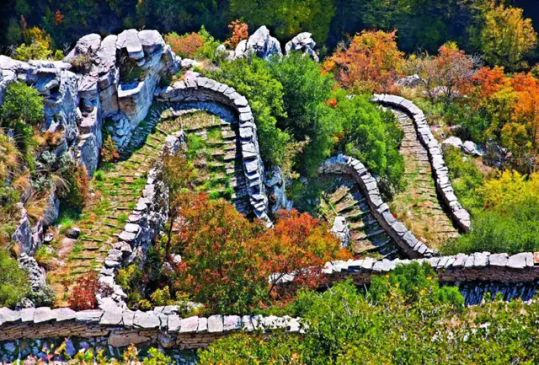
1100-step stairway in Vradeto village,(Greek: Βραδέτο) Greece
This stairway, a winding stone structure with black and white rocks creating three different lanes is a creative solution provided by the builders of this intricate and complicated construction to manage traffic between people and animals in this uneven, rough area, since this was the only way from the village to the surrounding areas, beyond the mountains.
For centuries, the village’s hard-to-reach location has made it impossible to open a road to facilitate the transportation of people and goods any other way. In fact, up until the early 1970s the Skala path was the only way in and out of the village. The new road, that bypasses the gorge, was built in 1974, and, almost instantly, the meandering Skala and the two bridges, Pera and Dothe, that go over the Mezaria ravine fell into disuse.
Vradeto is a village in the Greek Zagori region. It lies at a height of 1,340 m on Mt Tymphe in the Pindus mountain range. It is the highest of the 44 villages of Zagori. It is the middle of the Vikos–Aoös National Park and is about 50 km away from Ioannina.
Sources:Wikipedia and travel.gr
#autumn#fall#stairway#Greece#Vradeto village#Zagori#Epirus region#landscape#old#historic path#mountain village
0 notes
Text
PROLOGUE
5km outside Kalabaka we catch sight of the silhouette of the hills, their sheer rock faces rising up from the plain of Thessaly, glowing orange in the gloaming. The same silhouette that marked the end of last year’s adventure.
We had rendez-vous'd at the airport. John who’d flown in yesterday was reunited with his bike that BA had decided in their wisdom not to carry. A man not known for his exuberance, he was glowing with content. All was back right in the world.
Bike bags were stacked on the trailer. "Careful that's a new bike" says Mark as his is strapped on top. And then it had been a long drive.
And here we are back in Kalabaka and Mostera where Monasteries perch on top of sheer rock columns.
Marty Tours is back to continue our ride up the Pindu mountain range towards Albania. Exploring this ever more remote region and national park.
We have Martin, Mark, John, Andy, Torren, me (Piers) and Hamish (welcome back after skipping last year). And of course, Alex our freethinking anarchist guide and his new colleague Yannis, who quickly earns respect with his quick intelligence. Everyone present and correct. Some of us have taken a nerdy pleasure in cleaning and packing our well loved steeds. Others haven't. But all that is behind us. Now work and worry is behind us.
It is election day tomorrow. But Alex and Yannis will not be able to vote because you have to vote in person at your local station. People say the centre right government has fixed the election day to coincide with the holidays - young people are more likely to be away and also more likely to vote left. The drive is long, Mark stares fixedly at the dashboard video stream of his bike on the trailer behind.
We arrive in the dark at about 9 in the evening. Quickly assemble the bikes as best we can in the limited light. Martin has been training and has brought his own bike as well as hiring a power assisted one as back up.
0 notes
Photo

May it be a light to you in dark places, when all other lights go out. . J.R.R. Tolkien
by Gregorio Papageorgiou Anriquez
4 notes
·
View notes
Video
IMG_0106 by dimitris mimaros Via Flickr: Valia-Kalda ( Pindus National Park ) Βάλια Κάλντα ( Εθνικός Δρυμός Πίνδου ) ,από τα ποιο ωραία μέρη της Ελλάδας en.wikipedia.org/wiki/Pindus_National_Park
1 note
·
View note
Text
"One of the last wild rivers in Europe, home to more than 1,000 animal and plant species, has been declared a national park by the Albanian government, making the Vjosa the first of its kind on the continent.
The Vjosa River flows 168 miles (270kms) from the Pindus mountains in Greece through narrow canyons, plains and forests in Albania to the Adriatic coast. Free from dams or other artificial barriers, it is rich in aquatic species and supports myriad wildlife, including otters, the endangered Egyptian vulture and the critically endangered Balkan lynx, of which only 15 are estimated to remain in Albania.
For years, the Vjosa’s fragile ecosystem has been under threat: at one point as many as 45 hydropower plants were planned across the region.
But on Wednesday, after an almost decade-long campaign by environmental NGOs, Vjosa was declared the first wild river national park in Europe. Environmentalists described it as a historic decision that has placed the tiny Balkan nation at the forefront of river protection...
A Model for Conservation
Mirela Kumbaro Furxhi, Albania’s tourism and environment minister, said the creation of the park was part of the country’s evolution and continuing emancipation three decades on from communist rule.
“Vjosa is a symbol of human history and also a very important part of the history of our country,” she said. “Maybe Albania does not have the power to change the world, but it can create successful models of protecting biodiversity and natural assets, and we are proud to announce the creation of this first national park on one of the last wild rivers in Europe.”
The country, which attracted 7.5 million visitors last year, more than twice its 2.8m population, hopes to regenerate villages in the Vjosa region through ecotourism.

Details of the National Park
... The 12,727 hectare (31,500 acre) park aims to ensure the Vjosa and its unique ecosystems are safeguarded. It has been given IUCN category II park status, a high level of protection similar to that of a wilderness. The categorisation covers “large-scale ecological processes”, species and ecosystems, crucial to ensuring dams and gravel extraction are banned. It is expected to be operational in 2024...
The park will encompass the 118 miles of the Vjosa in Albania, three main tributaries, and some land, including areas at risk of flooding. Phase II will add other tributaries. Unlike the IUCN’s Wilderness Protected Areas, which limit the number of visitors, it will allow recreational tourism and some other activities such as local fishing, particularly for 60,000 residents in the catchment.
The Albanian government is starting a joint process with the Greek authorities to create the Aoos-Vjosa transboundary park, aiming to protect the entire river across both countries, who agreed in January to sign a memorandum of understanding specifying the next actions.
Wild Rivers in Europe
Europe has the most obstructed river landscape in the world, with barriers such as dams, weirs and fords, estimated to number more than a million, according to a 2020 EU study in 28 countries. Such fragmenting of rivers affects their ability to support life.
Ulrich Eichelmann, a conservationist and founder of Riverwatch and part of the Save the Blue Heart of Europe campaign, said: “Most people in central Europe have never ever seen a wild, living river, free from the impacts of human interference, that isn’t diverted or dammed or built up with embankments and where biodiversity is low as a result. But here, you have a wild river, full of complexity and without interference.”"
-via The Guardian (US), 3/15/23
#albania#europe#eastern europe#conservation#biodiversity#endangered species#rivers#national parks#wilderness protected area#greece#good news#hope
177 notes
·
View notes
Text
🎮 30 Questions Tag Game 🎮
I was tagged by @jaysdimples !! thank you sweets!💖💖
name/nickname: court is like the only one I have lol
star sign: Aquarius
height: 5'4
birthday: January 29th
favorite band: BTS (duh lol), newly found Monsta X fan also like TXT, Got7, All Time Low and other bands like Pink Floyd and such
time: 2:03pm
favorite solo artist: I listen to a lot of bands so im not sure? I like Post Malone, Jay Park, uhh idk who else lol I guess I listen to some Doja Cat
song stuck in your head: You Can't Hold My Heart- Monsta X
free space!: umm I love to paint but im kinda trash at it. I love music, playing music, singing and all that jazz. I spend most of my time working and walking my puppy
last show: peaky blinders
when i created this blog: I don't even remember now lol
what i post: I don't contribute very much to this platform besides my word vomit and freaking out over BTS lol I mostly reblog what I like *cough cough* bts.... I mean I made maybe two posts that I think did well but im mainly here to be trash in the tags and to look at what everyone else creates
last thing i googled: “where can I watch Jackass for free”.... lmao I am slightly ashamed
other blogs: fortunately for everyone on this site, I only have this one
do i get asks?: not really. I've maybe gotten like 5? and I am thankful to those 5 of you who did!!
why i chose my url?: I actually got help from the lovely @softjeon ! i love Sope so I wanted something that represented Yoongi and Hoseok
following: I follow a lot of people lol but I love all of them and they are the reason I keep getting back on here
followers: I think like 145? idk how honestly like I don't do anything besides reblog A LOT of stuff and freak out
average hours of sleep: probably like 4 hours rn.....lol
lucky number: 2. idk why I just kind of like the number. I mean with two there is always another thing you know? like you're not alone if another person is with you.
instruments: I used to own a whole ass piano at my parents house, but now I own a keyboard, bass guitar and I have a drum kit at my parents. haven't played in a while so probably rusty
what am i wearing?: black biker shorts and an oversized red mens t shirt and vans
dream job: my dream job has always been to produce music but im not that talented, so I would say my second dream job is the one I have now, a postpartum nurse
favorite food: CHICKEN TENDERS/NUGGETS....but also ice cream tbh
tea or coffee: neither, I can't have caffeine
nationality: American
favorite song: changes every day... lets be honest its Honsool- Agust D
last book i read: I don't even remember... does fanfic count?
top three fictional universes i would like to live in: peaky blinders, anything from Marvel, uhhhh idk what else lol
this was fun to do! sorry im boring and just now doing this lol I would like to tag: @xjoonchildx @minloop @iminthisstanshit @btsbias @ccypher3 @moonchild1 @pindu @kooksmos @ksjshoulders @yoongsjoonie @yoongikook @mintagust
5 notes
·
View notes
Photo

Good morning everyone! I woke to see the sun rise again and loved every moment of it! Pictured is me walking up a mountain in the Tzoumerka National Park, located in the Southern Pindus Mountains in my ancestral homeland of Epirus in Greece. You can’t tell but I got a basket full of mushrooms and a heart full of happiness in that pic! When we visit this region we often stop at @refuge_melissourgoi Which is at a base of a this beautiful summit and hosts us for many mushroom themed events, food and music! It’s in a lovely part of the country and whenever we are traveling and tell people we are headed to Tzoumerka, locals stop and say... Oooooooo....Tzoumerka! Basically it’s a stunning scene of living and culture that hasnt been disrupted toooo much by modernity. No billboards, no shopping malls, no nonsense, just pure nature and all it’s glory. I have opened a few more spots left for this years FUNGI, FLORA, FOOD & FORESTS OF GREECE retreat! Still offering a solid $500 off the listed price! Better pricing when you travel with a buddy! Offering payment plans and lots of beautiful additions to this trip! Be sure to check the website to more details and please don’t hesitate to contact me for even more details! Come with me! You’ll love it! www.smugtownmushrooms.com/greece2019 #smugtownmushrooms #smugtown #rochesterny #newyork #flx #fingerlakes #greece #hellas #tzoumerka #epirus #wildmushrooms #wildfoodlove #mycology #fungi #firtrees #mycorrhizae #spores #ellada #ecotourism #mycotour #mycotourism #offthebeatenpath #foraging #food #chestnuts #honey #permaculture #love #sun #moon #ancestors #ancestralhomeland #escapefromtrump #visitgreece #visitepirus #herbalism (at Mountain Refuge Melissourgoi) https://www.instagram.com/p/B1YnBonAY4Q/?igshid=z5br4hsqvdnk
#smugtownmushrooms#smugtown#rochesterny#newyork#flx#fingerlakes#greece#hellas#tzoumerka#epirus#wildmushrooms#wildfoodlove#mycology#fungi#firtrees#mycorrhizae#spores#ellada#ecotourism#mycotour#mycotourism#offthebeatenpath#foraging#food#chestnuts#honey#permaculture#love#sun#moon
2 notes
·
View notes
Photo

Driving in the Vikos-Aoös National Park of the Pindus mountains, Greece by takis_vsl on Instagram.
#greece#travel#landscape#mountains#nature#photography#wanderlust#woodlands#vikos-aoos national park#pindus#ioannina#epirus#mainland
29 notes
·
View notes
Text
The Age of Extinction — Rivers: ‘Historic Moment’ For Nature as Europe’s First Wild River National Park Announced in Albania
A project with outdoor gear company Patagonia and NGOs will protect the Vjosa, one of the continent’s last free-flowing waterways
— Karen McVeigh in Tirana | Wednesday 15 March 2023

The Vjosa River Near Qesarat, Southern Albania 🇦🇱. The river and its three main tributaries in the country have been declared a national park. Photograph: Nick St Oegger/The Guardian
One of the last wild rivers in Europe, home to more than 1,000 animal and plant species, has been declared a national park by the Albanian government, making the Vjosa the first of its kind on the continent.
The Vjosa River flows 168 miles (270kms) from the Pindus mountains in Greece through narrow canyons, plains and forests in Albania to the Adriatic coast. Free from dams or other artificial barriers, it is rich in aquatic species and supports myriad wildlife, including otters, the endangered Egyptian vulture and the critically endangered Balkan lynx, of which only 15 are estimated to remain in Albania.
For years, the Vjosa’s fragile ecosystem has been under threat: at one point as many as 45 hydropower plants were planned across the region.

The site of the abandoned Kalivaç dam project on the Vjosa River. The river’s new status will protect it from future development projects. Photograph: Nick St.Oegger/The Guardian
But on Wednesday, after an almost decade-long campaign by environmental NGOs, Vjosa was declared the first wild river national park in Europe. Environmentalists described it as a historic decision that has placed the tiny Balkan nation at the forefront of river protection.
Albania’s prime minister, Edi Rama, announced the park at a ceremony at Tepelena castle overlooking the river, attended by stakeholders and ministers. He described the creation of the national park as a “truly historic moment” for nature as well as social and economic development.
“Today we protect once and for all the only wild river in Europe,” he said. “This is about to change a mindset. Protecting an area does not mean that you enshrine it in isolation from the economy.”
He said national parks attract 20 Mirela Kumbaro Furxhi, Albania’s tourism and environment minister, said the creation of the park was part of the country’s evolution and continuing emancipation three decades on from communist rule.

The Vjosa River near Qesarat, southern Albania. Photograph: Nick St.Oegger/The Guardian
“Vjosa is a symbol of human history and also a very important part of the history of our country,” she said. “Maybe Albania does not have the power to change the world, but it can create successful models of protecting biodiversity and natural assets, and we are proud to announce the creation of this first national park on one of the last wild rivers in Europe.”
The country, which attracted 7.5 million visitors last year, more than twice its 2.8m population, hopes to regenerate villages in the Vjosa region through ecotourism.
A collaboration between the Albanian government, international experts, NGOs from the Save the Blue Heart of Europe campaign to protect Balkan rivers, the International Union for Conservation of Nature (IUCN) and Patagonia, the outdoor clothing company and environmental organisation, the 12,727 hectare (31,500 acre) park aims to ensure the Vjosa and its unique ecosystems are safeguarded. It has been given IUCN category II park status, a high level of protection similar to that of a wilderness. The categorisation covers “large-scale ecological processes”, species and ecosystems, crucial to ensuring dams and gravel extraction are banned. It is expected to be operational in 2024.
Boris Erg, director of the European office at IUCN, paid tribute to the government of Albania for its leadership and ambition. “Today marks a milestone for the people and biodiversity of Albania,” he said. “We invite other governments in the region and beyond to show similar ambition and help reach the vital goal of protecting 30% of the planet by 2030.”
The park will encompass the 118 miles of the Vjosa in Albania, three main tributaries, and some land, including areas at risk of flooding. Phase II will add other tributaries. Unlike the IUCN’s Wilderness Protected Areas, which limit the number of visitors, it will allow recreational tourism and some other activities such as local fishing, particularly for 60,000 residents in the catchment.

The Albanian government is starting a joint process with the Greek authorities to create the Aoos-Vjosa transboundary park, aiming to protect the entire river across both countries, who agreed in January to sign a memorandum of understanding specifying the next actions.
Europe has the most obstructed river landscape in the world, with barriers such as dams, weirs and fords, estimated to number more than a million, according to a 2020 EU study in 28 countries. Such fragmenting of rivers affects their ability to support life.
Ulrich Eichelmann, a conservationist and founder of Riverwatch and part of the Save the Blue Heart of Europe campaign, said: “Most people in central Europe have never ever seen a wild, living river, free from the impacts of human interference, that isn’t diverted or dammed or built up with embankments and where biodiversity is low as a result. But here, you have a wild river, full of complexity and without interference.”
Eichelmann said he hoped it would establish a blueprint for wild rivers elsewhere.
Ryan Gellert, Patagonia’s CEO, said the collaboration proved the power of collective action. “We hope it will inspire others to come together to protect the wild places we have left, in a meaningful way,” he said, adding that the park was proof that the “destruction of nature did not have to be the price of progress”.

Ulrich Eichelmann of Riverwatch said he hopes the Vjosa project would be a blueprint for wild river conservation elsewhere. Photograph: Nick St.Oegger/The Guardian
The company has provided $4.6m (£3.8m) to support the national park and protect wild rivers across the Balkans, through the non-profit Holdfast Collective, set up in 2022 when it declared Earth its only shareholder.
The campaign to protect the Vjosa was given a boost when Leonardo DiCaprio posted about it on Instagram in 2019, saying: “This is one of Europe’s last wild rivers: but for how long?”
NGOs said there was still work to be done to safeguard the remaining unprotected parts of the river, including the delta and the source in Greece. Rama said that an airport planned at the river delta will go ahead but without risks to nature.
0 notes
Photo
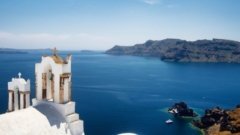
The Nazis proceeded to administer Athens and Thessaloniki, while other regions of the country were given to Nazi Germany’s partners, Fascist Italy and Bulgaria. The occupation brought about terrible hardships for the Greek civilian population. Over 100,000 civilians died of starvation during the winter of 1941–1942, tens of thousands more died because of reprisals by Nazis and collaborators, the country’s economy was ruined, and the great majority of Greek Jews were deported and murdered in Nazi concentration camps.[124][125] The Greek Resistance, one of the most effective resistance movements in Europe, fought vehemently against the Nazis and their collaborators. The German occupiers committed numerous atrocities, mass executions, and wholesale slaughter of civilians and destruction of towns and villages in reprisals. In the course of the concerted anti-guerilla campaign, hundreds of villages were systematically torched and almost 1,000,000 Greeks left homeless.[125] In total, the Germans executed some 21,000 Greeks, the Bulgarians 40,000, and the Italians 9,000.[126] Following liberation and the Allied victory over the Axis, Greece annexed the Dodecanese Islands from Italy and regained Western Thrace from Bulgaria. The country almost immediately descended into a bloody civil war between communist forces and the anti-communist Greek government, which lasted until 1949 with the latter’s victory. The conflict, considered one of the earliest struggles of the Cold War,[127] resulted in further economic devastation, mass population displacement and severe political polarisation for the next thirty years.[128] Although the post-war decades were characterised by social strife and widespread marginalisation of the left in political and social spheres, Greece nonetheless experienced rapid economic growth and recovery, propelled in part by the U.S.-administered Marshall Plan.[129] In 1952, Greece joined NATO, reinforcing its membership in the Western Bloc of the Cold War. Military regime (1967–74) King Constantine II’s dismissal of George Papandreou’s centrist government in July 1965 prompted a prolonged period of political turbulence, which culminated in a coup d’état on 21 April 1967 by the Regime of the Colonels. Under the junta, civil rights were suspended, political repression was intensified, and human rights abuses, including state-sanctioned torture, were rampant. Economic growth remained rapid before plateauing in 1972. The brutal suppression of the Athens Polytechnic uprising on 17 November 1973 set in motion the events that caused the fall of the Papadopoulos regime, resulting in a counter-coup which overthrew Georgios Papadopoulos and established brigadier Dimitrios Ioannidis as the new junta strongman. On 20 July 1974, Turkey invaded the island of Cyprus in response to a Greek-backed Cypriot coup, triggering a political crisis in Greece that led to the regime’s collapse and the restoration of democracy through Metapolitefsi.The former prime minister Konstantinos Karamanlis was invited back from Paris where he had lived in self-exile since 1963, marking the beginning of the Metapolitefsi era. The first multiparty elections since 1964 were held on the first anniversary of the Polytechnic uprising. A democratic and republican constitution was promulgated on 11 June 1975 following a referendum which chose to not restore the monarchy. Meanwhile, Andreas Papandreou, George Papandreou’s son, founded the Panhellenic Socialist Movement (PASOK) in response to Karamanlis’s conservative New Democracy party, with the two political formations dominating in government over the next four decades. Greece rejoined NATO in 1980.[c][130] Greece became the tenth member of the European Communities (subsequently subsumed by the European Union) on 1 January 1981, ushering in a period of sustained growth. Widespread investments in industrial enterprises and heavy infrastructure, as well as funds from the European Union and growing revenues from tourism, shipping, and a fast-growing service sector raised the country’s standard of living to unprecedented levels. Traditionally strained relations with neighbouring Turkey improved when successive earthquakes hit both nations in 1999, leading to the lifting of the Greek veto against Turkey’s bid for EU membership. The country adopted the euro in 2001 and successfully hosted the 2004 Summer Olympic Games in Athens.[131] More recently, Greece has suffered greatly from the late-2000s recession and has been central to the related European sovereign debt crisis. Due to the adoption of the euro, when Greece experienced financial crisis, it could no longer devalue its currency to regain competitiveness. Youth unemployment was especially high during the 2000s.[132] The Greek government-debt crisis, and subsequent austerity policies, Located in Southern[133] and Southeast Europe,[134] Greece consists of a mountainous, peninsular mainland jutting out into the sea at the southern end of the Balkans, ending at the Peloponnese peninsula (separated from the mainland by the canal of the Isthmus of Corinth) and strategically located at the crossroads of Europe, Asia, and Africa.[d] Due to its highly indented coastline and numerous islands, Greece has the 11th longest coastline in the world with 13,676 km (8,498 mi);[140] its land boundary is 1,160 km (721 mi). The country lies approximately between latitudes 34° and 42° N, and longitudes 19° and 30° E, with the extreme points being:[141] North: Ormenio village South: Gavdos island East: Strongyli (Kastelorizo, Megisti) island West: Othonoi island Eighty percent of Greece consists of mountains or hills, making the country one of the most mountainous in Europe. Mount Olympus, the mythical abode of the Greek Gods, culminates at Mytikas peak 2,918 metres (9,573 ft),[142] the highest in the country. Western Greece contains a number of lakes and wetlands and is dominated by the Pindus mountain range. The Pindus, a continuation of the Dinaric Alps, reaches a maximum elevation of 2,637 m (8,652 ft) at Mt. Smolikas (the second-highest in Greece) and historically has been a significant barrier to east-west travel. The Pindus range continues through the central Peloponnese, crosses the islands of Kythera and Antikythera and finds its way into southwestern Aegean, in the island of Crete where it eventually ends. The islands of the Aegean are peaks of underwater mountains that once constituted an extension of the mainland. Pindus is characterised by its high, steep peaks, often dissected by numerous canyons and a variety of other karstic landscapes. The spectacular Vikos Gorge, part of the Vikos-Aoos National Park in the Pindus range, is listed by the Guinness book of World Records as the deepest gorge in the world.[143] Another notable formation are the Meteora rock pillars, atop which have been built medieval Greek Orthodox monasteries. Northeastern Greece features another high-altitude mountain range, the Rhodope range, spreading across the region of East Macedonia and Thrace; this area is covered with vast, thick, ancient forests, including the famous Dadia Forest in the Evros regional unit, in the far northeast of the country. Extensive plains are primarily located in the regions of Thessaly, Central Macedonia and Thrace. They constitute key economic regions as they are among the few arable places in the country. Rare marine species such as the pinniped seals and the loggerhead sea turtle live in the seas surrounding mainland Greece, while its dense forests are home to the endangered brown bear, the Eurasian lynx, the roe deer and the wild goat. Islands Main article: List of islands of Greece Greece features a vast number of islands – between 1,200 and 6,000, depending on the definition,[144] 227 of which are inhabited – and is considered a non-contiguous transcontinental country. Crete is the largest and most populous island; Euboea, separated from the mainland by the 60 m-wide Euripus Strait, is the second largest, followed by Lesbos and Rhodes. The Greek islands are traditionally grouped into the following clusters: the Argo-Saronic Islands in the Saronic gulf near Athens, the Cyclades, a large but dense collection occupying the central part of the Aegean Sea, the North Aegean islands, a loose grouping off the west coast of Turkey, the Dodecanese, another loose collection in the southeast between Crete and Turkey, the Sporades, a small tight group off the coast of northeast Euboea, and the Ionian Islands, located to the west of the mainland in the Ionian Sea. Climate This section does not cite any sources. Further information: Climate of Greece resulted in protests. http://bit.ly/2IkK5Zj
0 notes
Link
Pindus National park holds a variety of adventures! Get your Greece Schengen visa and unlock the mysteries now! Hike, ride or river raft through the park!
0 notes
Photo
D5778

May it be a light to you in dark places, when all other lights go out. . J.R.R. Tolkien
by Gregorio Papageorgiou Anriquez
4 notes
·
View notes